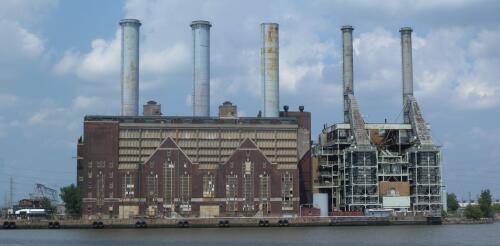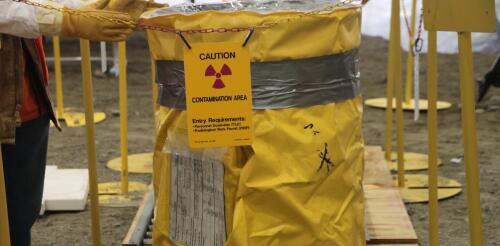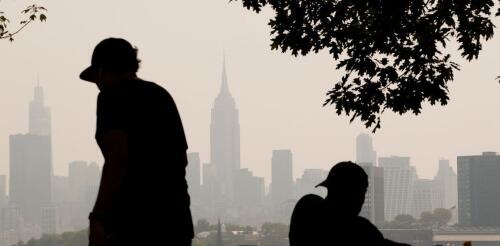Public health
The U.S. is nearing the end of one of its hottest summers on record. Across the nation, heat waves have driven peak electricity demand on some days to levels far exceeding seasonal averages. Grid operators rely on so-called “peaker” plants to ensure they will have enough supply to meet these demand surges. Peaker units can start up quickly and at relatively low cost, but they typically burn more fuel per unit of electricity produced than other types of fossil fuel units. Because they are less efficient than other plants, peakers typically run only during high-demand periods. Historically, peakers have run for less than 10% of the year, often for just a few hours at a stretch. Nonetheless, their higher emissions per unit of electricity produced raise environmental and health concerns. As of 2021, there were 999 peaker plants across the U.S., in all 50 states. About 70% of these plants burned natural gas, and the rest were powered by oil and coal. To reduce air p...
Christopher Nolan’s film “Oppenheimer” has focused new attention on the legacies of the Manhattan Project – the World War II program to develop nuclear weapons. As the anniversaries of the bombings of Hiroshima and Nagasaki on Aug. 6 and Aug. 9, 1945, approach, it’s a timely moment to look further at dilemmas wrought by the creation of the atomic bomb. The Manhattan Project spawned a trinity of interconnected legacies. It initiated a global arms race that threatens the survival of humanity and the planet as we know it. It also led to widespread public health and environmental damage from nuclear weapons production and testing. And it generated a culture of governmental secrecy with troubling political consequences. As a researcher examining communication in science, technology, energy and environmental contexts, I’ve studied these legacies of nuclear weapons production. From 2000 to 2005, I also served on a citizen advisory board that provides...
Hurricane Helene’s flooding has subsided, but health risks are growing in hard-hit regions of the North Carolina mountains, where many people lost access to power and clean water. More than 180 deaths across the Southeast had been attributed to Hurricane Helene within days of the late September 2024 storm, according to The Associated Press, and hundreds of people remained unaccounted for. In many areas hit by flooding, homes were left isolated by damaged roads and bridges. Phone service was down. And electricity was likely to be out for weeks. As a disaster epidemiologist and a native North Carolinian, I have been hearing stories from the region that are devastating. Contaminated water is one of the leading health risks, but residents also face harm to mental health, stress that exacerbates chronic diseases and several other threats. Water risks: What you can’t see can hurt you Access to clean water is one of the most urgent health concerns after a flood. People ne...
On Feb. 3, 2023, a train carrying chemicals jumped the tracks in East Palestine, Ohio, rupturing railcars filled with hazardous materials and fueling chemical fires at the foothills of the Appalachian Mountains. The disaster drew global attention as the governors of Ohio and Pennsylvania urged evacuations for a mile around the site. Flames and smoke billowed from burning chemicals, and an acrid odor radiated from the derailment area as chemicals entered the air and spilled into a nearby creek. Three days later, at the urging of the rail company, Norfolk Southern, about 1 million pounds of vinyl chloride, a chemical that can be toxic to humans at high doses, was released from the damaged train cars and set aflame. Federal investigators later concluded that the open burn and the black mushroom cloud it produced were unnecessary, but it was too late. Railcar chemicals spread into Ohio and Pennsylvania. The scene after a train carrying haz...
Kids born in 2020 worldwide will experience twice the number of wildfires during their lifetimes compared with those born in 1960. In California and other western states, frequent wildfires have become as much a part of summer and fall as popsicles and Halloween candy. Wildfires produce fine particulate matter, or PM₂.₅, that chokes the air and penetrates deep into lungs. Researchers know that short-term exposure to wildfire PM₂.₅ increases acute care visits for cardiorespiratory problems such as asthma. However, the long-term effects of repeated exposure to wildfire PM₂.₅ on chronic health conditions are unclear. One reason is that scientists have not decided how best to measure this type of intermittent yet ongoing exposure. Environmental epidemiologists and health scientists like us usually summarize long-term exposure to total PM₂.₅ – which comes from power plants, industry and transportation – as average exposure...




